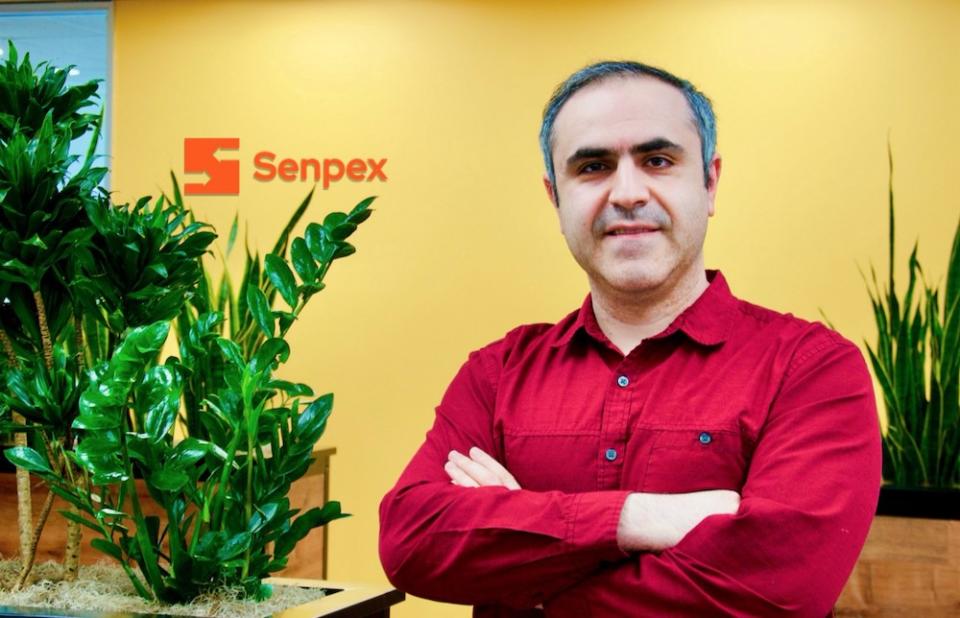Chain Reaction: Anar Mammadov of Senpex on Slashing Shipping Costs

Chain Reaction is Sourcing Journal’s discussion series with industry executives to get their take on today’s logistics challenges and learn about ways their company is working to keep the flow of goods moving. Here, Anar Mammadov, technical co-founder & CEO of Senpex, discusses how the last-mile delivery company is helping its partners efficiently make deliveries while reducing costs.

Name: Anar Mammadov
More from Sourcing Journal
Sourcing with Due Diligence: A Commitment to People Along the Supply Chain
'Tremendous Outcome': Yellow Gets Court Nod to Sell 130 Assets
Title: Technical Co-Founder & CEO
Company: Senpex
What industries do you primarily serve?
Primarily, our clients are in the retail, e-commerce, food, health and biotech, grocery, catering and business-to-business (B2B) distribution industries.
We provide Software as a Service (SaaS) through our Senpex Application Programming Interface (API), a tool that allows different software solutions to communicate and work together seamlessly. The clients that use it, which include companies serving a wide range of industries, can integrate our proven logistics capabilities with 56 different e-commerce marketplaces and platforms, including Shopify and WooCommerce.
We also provide Delivery as a Service (DaaS) through our Senpex Local and Senpex Nationwide products. Senpex Nationwide provides up to 51 percent savings on shipping costs through leading national carriers, which stems from our ability to manage a substantial volume of shipments. We also offer commercial moving services.
Which industry do you think has the most to teach fashion about improving their supply chain logistics?
One of the key challenges the fashion industry is facing when it comes to supply chain logistics involves reverse logistics, which is essentially the process of managing returns. Recent statistics from Coresight Research show that nearly 1 in 4 online fashion orders are returned, representing not only lost income, but increased logistics costs.
Reverse logistics is an issue e-commerce has been forced to deal with for a long time. That industry would have the best insights to offer to fashion regarding how to optimize strategies for effective reverse logistics.
What are the main things brands and retailers could do (or stop doing) right now that would immediately improve logistics?
The first thing they can do is stop overpromising with on-demand delivery. Last-mile logistics are the most expensive phase of the supply chain due to gas, drivers’ fees and other elements. Promising last-minute delivery makes it even more expensive. A better approach is to identify a few time windows—one-day, three-day, five-week, etc.—and then spend a few months getting experience with meeting those parameters. After that, you will better understand what it takes to meet the needs and costs associated with improving your delivery options.
The second thing is integrating delivery logistics into their enterprise resource planning (ERP) system. When businesses combine delivery logistics with their ERP, they boost efficiency by considering route planning as part of the overall sales strategy.
Finally, businesses should be conducting smart analyses of their logistics efforts. This involves analyzing data to determine the efficiency of their systems and, where necessary, identify changes with the potential to improve efficiency.
What is the one thing brands and retailers could be doing to make better use of technology to improve logistics?
By integrating API logistics tools into their core business platforms, brands and retailers can bring seamless automation to last-mile logistics. These tools carry the bulk of the load for retailers, allowing consumers to initiate the process and driving automated communication with drivers.
When it comes to creating efficiencies, there are quick wins and longer plays. What are a few things your company is doing to help its partners succeed on both fronts?
For quick wins, we help our partners by ensuring their deliveries are reliable and affordable. We achieve this by optimizing routes to allow them to be completed reliably with fewer drivers and less fuel.
For longer plays, we are providing transparency and visibility in the delivery process, which allows for trust to be built between the vendor and the consumer. We also provide them with the infrastructure they need, both in terms of our SaaS and our DaaS, to grow and scale.
What is your company doing to make the movement of goods more sustainable?
One of the main things we do is leverage the latest technology to optimize delivery routes. The shorter the route, the less gas is needed. Also, by empowering multi-route optimization, we allow for fewer trucks to be on the road.
We are also supporting sustainability by including electric vehicles in our fleets. Allowing customers to utilize electronic signatures in the delivery process decreases the use of paper products.
What area of logistics isn’t receiving the industry attention it deserves?
The movement of refrigerated products. It’s a very challenging facet of logistics that requires a lot of specialized expertise and, in many cases, involves food or health-related products, which means a breakdown in the system can be costly and dangerous.
Are you optimistic about the state of supply chains in the next few years?
Yes. The industry is growing, with more consumers choosing e-commerce to access goods and services. Also, advances in autonomous vehicles are opening the door to exciting new delivery options that I believe will come into play over the next few years.

